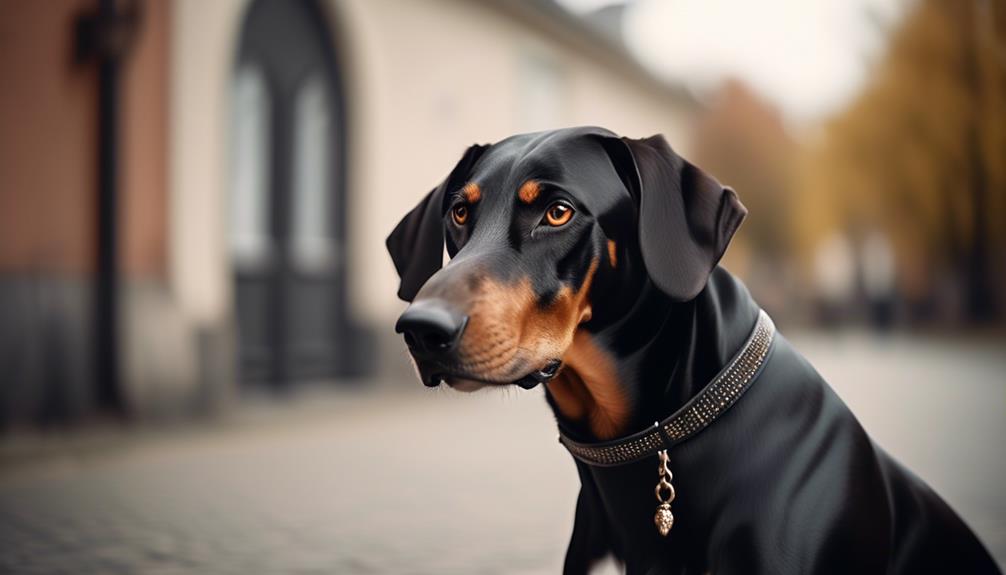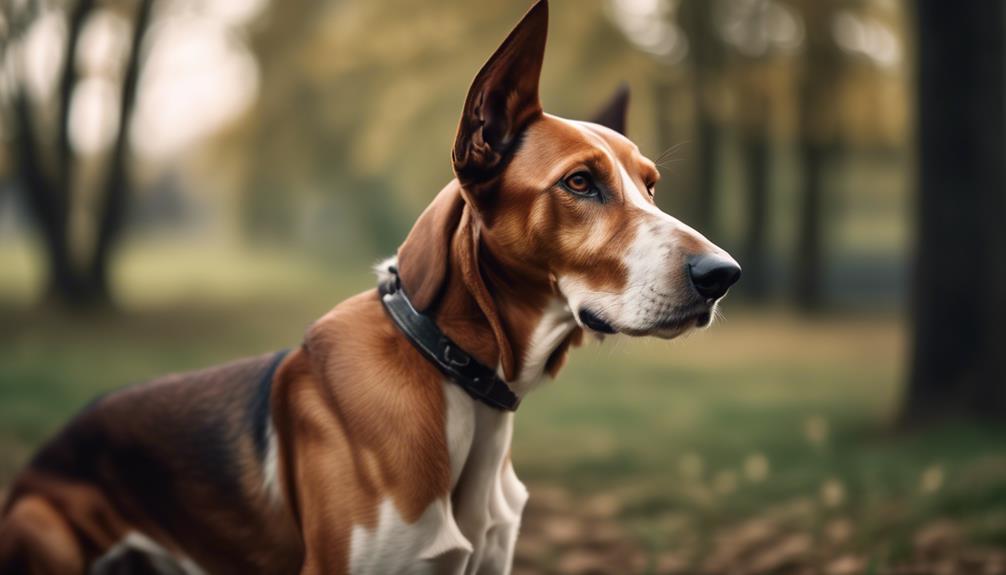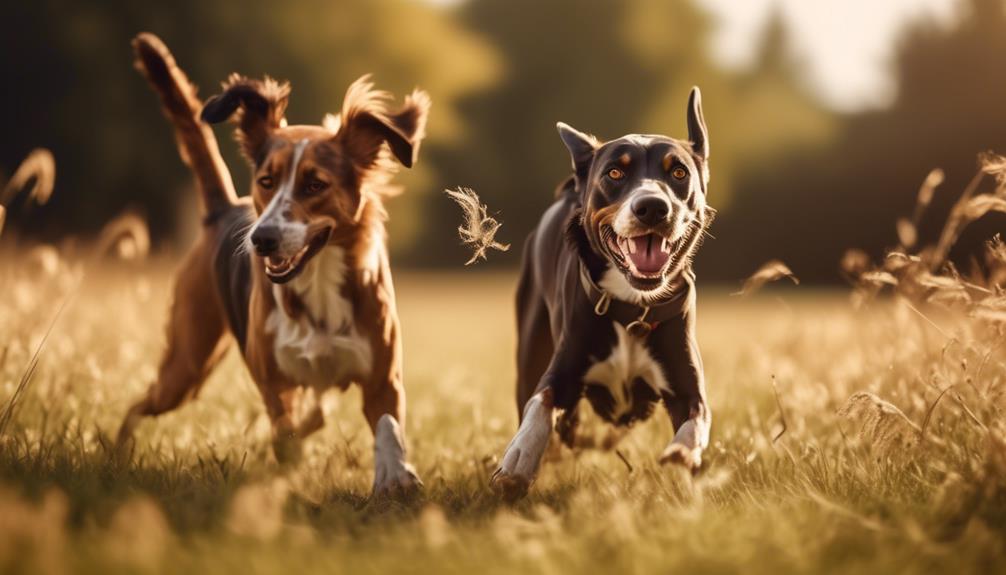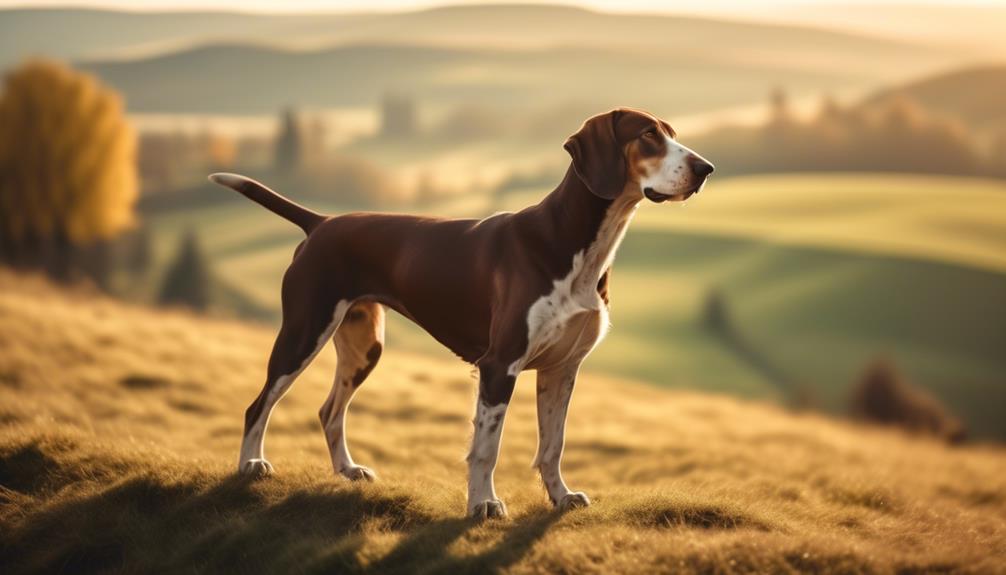
Are you tired of coming home to a messy house, chewed-up furniture, and your favorite shoes missing?
Imagine a world where you can leave your Transylvanian Hound home alone without worrying about the aftermath.
Meet Sarah, a busy professional who was skeptical about getting a dog due to her demanding work schedule. However, after adopting a Transylvanian Hound named Max, her life took an unexpected turn. Max not only became her loyal companion but also proved to be a well-behaved and adaptable apartment dog.
Intrigued? Keep reading to discover how the Transylvanian Hound could be the perfect addition to your family, whether you live in a cozy apartment or a spacious house.
Key Takeaways
- The Transylvanian Hound is a versatile and ancient breed known for its hunting prowess and courage.
- It is adaptable to apartment living, but energy levels and space requirements should also be considered when choosing a dog for an apartment.
- Understanding a breed’s temperament is important for selecting a compatible match with one’s lifestyle.
- Regular veterinary checkups, exercise, grooming, and a proper diet are essential for the health and well-being of the Transylvanian Hound.
Origin and Characteristics
The Transylvanian Hound, originating from Hungary, is a versatile and ancient breed known for its hunting prowess and courage. This medium-sized dog stands between 18-25 inches tall and weighs 55-77 pounds.
With a short, dense coat that’s tan and black, the Transylvanian Hound has a friendly disposition, making it suitable as both a working dog and a family companion. It thrives on physical activity and mental stimulation, so be prepared to provide plenty of exercise and mental challenges.
This breed adapts well to apartment living, but remember that size alone shouldn’t be the only factor when choosing a dog for an apartment. Consider energy levels, space requirements, and good manners towards neighbors.
Select a Transylvanian Hound that creates a harmonious living environment and brings joy to both you and your neighbors.
See another Dog breed profile.
Treeing Tennessee Brindle
Adaptability for Apartment Living

When considering the Transylvanian Hound’s adaptability for apartment living, it’s important to take into account its size, energy levels, and how well it interacts with neighbors.
While the Transylvanian Hound is a medium-sized breed, size alone shouldn’t be the sole determinant when choosing a dog for an apartment. It adapts well to apartment living due to its moderate energy levels and friendly disposition.
This breed thrives on physical activity and mental stimulation, making it well-suited for apartment living as long as its exercise needs are met.
Additionally, the Transylvanian Hound is known for its good manners and ability to get along with neighbors, which is crucial for creating a harmonious living environment.
Temperament and Friendliness

To truly understand the Transylvanian Hound’s temperament and friendliness, it’s important to consider its unique characteristics and how they align with your lifestyle. Here are three key points to consider:
- Good for novice owners: The Transylvanian Hound is known for its friendly disposition, making it a suitable choice for first-time dog owners. This breed is generally easy to train and eager to please, making the learning process enjoyable for both the owner and the dog.
- Sensitivity level varies among dogs: While the Transylvanian Hound is generally friendly and affectionate, individual dogs may vary in their sensitivity to certain stimuli. It’s important to provide a nurturing and supportive environment to help them feel secure and comfortable.
- Tolerance for being alone varies among breeds: Some dogs are more prone to separation anxiety than others. The Transylvanian Hound, being a pack-oriented breed, may not do well if left alone for long periods. They thrive on companionship and may become anxious or destructive if left alone for extended periods of time.
Behavioral Factors to Consider

Consider the behavioral factors that play a crucial role in understanding and managing the Transylvanian Hound’s temperament and ensuring a harmonious living environment. It is important to be aware of certain behavioral traits and tendencies when considering this breed. To help you better understand, here are some key factors to consider:
| Behavioral Factors | Description |
|---|---|
| Aggression | Aggression in dogs is often rooted in fear and anxiety. Understanding the root causes of aggression is essential for effective management and addressing. |
| Wandering | Dogs with predatory instincts may have a strong tendency to wander. Managing and training dogs with a tendency to wander is crucial for their safety. |
| Barking or Howling | Some dog breeds are more prone to barking or howling than others. Consider the breed’s tendency to bark or howl when choosing a breed. |
| Exercise Needs | Providing adequate exercise is essential for a dog’s physical and mental well-being. Some dogs are naturally more playful than others. Consider how much playtime you can dedicate to a dog before choosing a breed. |
| Socialization | Proper socialization is important for the Transylvanian Hound to develop good manners and get along well with other animals and people. |
Health, Care, and Feeding

Taking care of the health, grooming, and feeding needs of your Transylvanian Hound is essential for their overall well-being. Here are three important points to consider:
- Regular veterinary checkups are important to ensure your dog’s health. They’re generally considered a healthy breed, but they can be predisposed to hip dysplasia and elbow dysplasia. By staying on top of their health, you can catch any potential issues early on and provide appropriate care.
- Daily exercise is necessary to prevent weight gain in your Transylvanian Hound. These dogs thrive on physical activity, so make sure to provide them with plenty of opportunities for exercise. This can include walks, runs, or playtime in a securely fenced yard.
- When it comes to feeding, it’s important to choose a diet that’s formulated for a medium to large-sized breed. Measure out their food and feed them twice a day to ensure they’re getting the right amount. It’s always a good idea to consult with your veterinarian for individual recommendations based on your dog’s specific needs.
Training and Exercise Requirements

Regular exercise and training are essential for the well-being and development of your Transylvanian Hound. As an active and versatile breed, your Transylvanian Hound thrives on physical activity and mental stimulation. Aim to provide at least 60 minutes of exercise every day to keep them happy and healthy. Engage in activities such as brisk walks, jogging, hiking, or playing fetch in a fenced yard.
Mental stimulation is equally important, so incorporate obedience training, puzzle toys, and interactive games into their routine. Consistency and positive reinforcement are key when training your Transylvanian Hound, as they respond well to praise and rewards.
Remember to socialize them from an early age to ensure they’re well-adjusted and friendly towards other animals and people. By dedicating time and effort to their training and exercise needs, you’ll have a well-rounded and contented Transylvanian Hound.
Conclusion and Final Thoughts

In summary, the Transylvanian Hound is a versatile and friendly breed that thrives on physical activity and mental stimulation. They make excellent working dogs and family companions due to their friendly disposition.
Here are three key points to consider about the Transylvanian Hound:
- Adaptability: This breed adapts well to apartment living, but it’s important to consider their energy levels and space requirements. Prioritize qualities such as being quiet, low-energy, and displaying good manners towards neighbors.
- Temperament: The Transylvanian Hound is good for novice owners and their sensitivity level varies among dogs. Consider their tolerance for being alone and different weather conditions when selecting a compatible match with your lifestyle.
- Behavioral Factors: Aggression in dogs is often rooted in fear and anxiety, so understanding the root causes is essential for effective management. Additionally, some dogs have a strong tendency to wander or bark, so training and management strategies should be implemented accordingly.
Frequently Asked Questions
Are Transylvanian Hounds Good With Children and Other Pets?
Yes, they are generally good with children and other pets. However, it’s important to socialize and introduce them properly. Supervision is recommended to ensure a harmonious and safe interaction between the Transylvanian Hound and children/pets.
How Much Exercise Do Transylvanian Hounds Need on a Daily Basis?
On a daily basis, Transylvanian Hounds need a good amount of exercise to keep them happy and healthy. Regular walks, playtime, and mental stimulation are essential to meet their activity needs.
Do Transylvanian Hounds Have a Strong Prey Drive?
Yes, Transylvanian Hounds have a strong prey drive. They are known for their hunting prowess and may have a strong tendency to chase small animals. Proper training and management are important to ensure their safety.
Can Transylvanian Hounds Be Left Alone for Long Periods of Time?
No, they can’t. Dogs, including Transylvanian Hounds, should not be left alone for long periods of time. They require companionship and stimulation. Consider hiring a dog sitter or using dog daycare if you’re away for extended periods.
What Type of Training Methods Work Best for Transylvanian Hounds?
When training a Transylvanian Hound, positive reinforcement techniques work best. Use rewards like treats and praise to motivate and encourage good behavior. Consistency and patience are key. Avoid harsh punishments, as this breed responds better to positive reinforcement.
Conclusion
In conclusion, the Transylvanian Hound is a versatile and friendly breed that can adapt well to apartment living. With their hunting prowess and friendly disposition, they make excellent working dogs and family companions.
It’s important to consider factors such as energy levels, space requirements, and good manners towards neighbors when choosing a dog for an apartment. With proper care, training, and exercise, the Transylvanian Hound can thrive in an apartment setting and bring joy to your family.




